
Soft Curls, Zero Fuss: Creamy Leave-In for Little Ones
Soft Curls, Zero Fuss: Why a Creamy Leave-In Matters
A gentle, creamy leave-in conditioner can make daily care for babies and toddlers with curly or wavy hair simple and joyful. It adds moisture, eases detangling, and helps curls stay soft without heavy product or fuss. Choose mild, safety-first ingredients for delicate skin and scalp.
This guide shows how creamy leave-ins work, which ingredients to welcome or skip, and how to pick the right formula for your child’s hair and scalp. You’ll find a step-by-step gentle application routine, safe DIY ideas with storage tips, and troubleshooting plus long-term care advice to keep tiny curls healthy and happy. Perfect for busy parents seeking calm, quick results every day and gentle routines too.
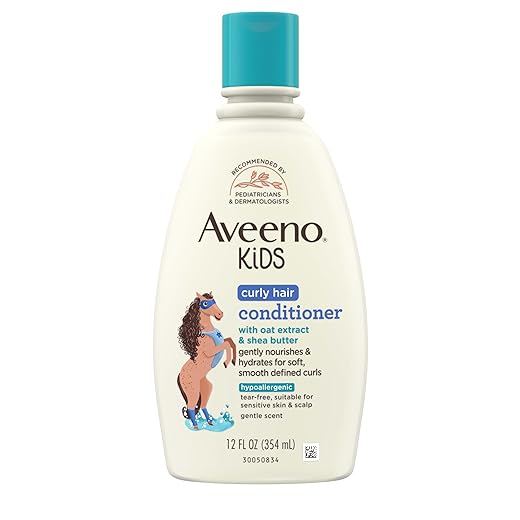



Can Kids’ SkalA Work for Adults Too? Curly Hair Routine
How Creamy Leave-Ins Work for Tiny Curls
What the cream base actually does
Creamy leave-ins are essentially a soft, spreadable cocktail of emollients and light hydrators. The emollient base — think shea butter derivatives, light plant oils, or esters — smooths and softens each fragile curl strand so hair feels supple, not crunchy. Humectants like glycerin or propanediol gently draw moisture in without over-sucking delicate scalps. The cream texture also lowers surface friction, which makes fingers or a wide-tooth comb glide through tangles instead of catching and breaking tiny hairs.
Why children’s formulas are different
Kids’ products strip back complexity. Compared with adult lines you’ll notice:
Cream vs. spray vs. oil — real-world tradeoffs
Quick, usable tips
Ingredients to Welcome — and Ingredients to Skip
Welcome these gentle helpers
Look for simple, skin-friendly components that soothe, smooth, and protect tiny curls:
Real-world pick: parents often praise products that combine shea or coconut-derived emollients with a touch of glycerin for manageable slips on toddler curls.
Skip these common culprits
Avoid ingredients that increase dryness, irritation, or allergy risk:
Nut-derived oils & allergy flags
Many kids’ creams use coconut or shea (a tree nut derivative). While coconut is generally low-risk, tree-nut allergies exist. If your child has a known nut allergy, check labels and consult your pediatrician.
Patch tests & label reading — quick how-to
Do a patch test: apply a pea-sized amount behind the ear or inner forearm for 48 hours and watch for redness or itching. Favor products labeled “hypoallergenic,” “dermatologist-tested,” or “pediatrician-recommended” as starting points — they’re not guarantees but useful indicators.
Next, we’ll match these ingredient priorities to specific hair types so you can pick the right formula for your child’s curls.
Pick the Right Formula for Your Child’s Hair and Scalp
Match texture and strength to age and curl density
Very fine baby hair benefits from ultra-light, low-residue creams or lotion-leave-ins — think milky textures that vanish quickly and never weigh down soft wisps. Thicker toddler curls often need a richer cream with more slip (lanolin-free butters, lightweight oils) to ease detangling and define ringlets. Real example: parents of 14-month-olds often swap a milky leave-in for a richer cream after baths when they notice tangles forming faster.
Sensitive scalps, cradle cap and eczema-prone skin
Choose fragrance-free, minimal-ingredient formulas labeled for sensitive skin. Avoid added essential oils and opt for products with calming ingredients (oat extract, colloidal oatmeal). For cradle cap or persistent flaking, use gentle scalp care first (soft brush after a warm oil or pediatrician-recommended shampoo) and consult your pediatrician before adding medicated products. Seek medical advice if redness, bleeding, spreading, or signs of infection appear.
Seasonal switches and ingredient cautions
Adjust formulas with the seasons:
Packaging for daycare and travel
Practical packaging matters: pumps give dose control; squeeze tubes reduce spills; small screw-top travel jars are handy for backpacks. Look for leakproof, plastic containers, TSA-friendly sizes, and pre-labeled or writeable surfaces for daycare. Single-use sachets or small sample pots are great trial options.
Quick checklist for parents:
Next up: a clear, gentle step-by-step application and styling routine you can use after bath time.
Step-by-Step: Gentle Application and Styling Routine
When to apply
Use a creamy leave-in on damp hair—right after a gentle bath or co-wash, when curls are towel-squeezed (not dripping). Damp strands absorb cream best, so wait a minute while you play a quick game of “pat dry” before applying.
How much to use (age + length)
For spray leave-ins use 1–3 mists for babies, 4–6 for older toddlers.
Even distribution & detangling
Start with finger raking to spread the cream and feel knots. Then:
A quick parent hack: sectioning into four cuts detangling time in half during bedtime routines.
Low-fuss styles that hold cream well
Night protection, refresh & buildup prevention
Put on a soft bonnet before naps or night; pair with a cotton pillowcase if preferred for breathability. Refresh between washes with a fingertip amount (very small dab) or a light mist—avoid full reapplication daily. To prevent buildup, use minimal product, rotate in a lighter spray some days, and clarify once every 1–3 weeks depending on residue.
Next up: troubleshooting common sticky spots and a long-term care plan for healthy, happy curls.
Safe DIY Creamy Leave-In Ideas and Storage Advice
Single-ingredient boosts (super quick)
For ultra-simple touch-ups, a single ingredient can do the job:
These are oil-based, stable, and last longest — keep tiny amounts on hand for travel or a bedtime rescue.
Light aloe + glycerin hydrator
Mix a small amount for extra moisture without weight:
This blend gives gentle slip and hydration; glycerin attracts moisture, so use less in very dry climates to avoid stickiness.
Gentle lotion‑base cream
For a creamier feel without DIY emulsifiers:
Safety, labeling & storage
Shelf-life & when to discard
A quick homemade dab can simplify busy mornings — next we’ll cover common sticky spots and longer-term curl care strategies.
Troubleshooting and Long-Term Care for Healthy Curls
Quick fixes for common problems
Buildup, pilling, and unexpected stiffness are the most common complaints. Try these fast fixes before swapping every product on the shelf:
Signs of irritation or allergy — what to watch for
Redness, itching, rash, or swelling after using a leave-in calls for immediate action:
Managing seasonal dryness
In winter or dry climates, curls can need more weightless moisture and barrier support. Simple adjustments help:
Long-term habits for healthy curls
Small, consistent practices matter:
Red flags — when to call a professional
See a pediatrician or pediatric dermatologist for persistent scalp sores, severe flaking that won’t clear, spreading rash, swelling of the face or lips, difficulty breathing, or any reaction that worsens despite stopping the product.
Next, enjoy manageable, happy curls with the simple strategies above — and read on for final tips.
Enjoy Manageable, Happy Curls
Choose a gentle, age-appropriate creamy leave-in, prioritize safe, nourishing ingredients, and avoid harsh additives. Learn your child’s curl and scalp needs, pick the right formula, and master a simple, low-fuss application routine that protects moisture without buildup.
Test new products on a small patch, monitor scalp health, and adjust frequency as curls and seasons change. With patience and consistent care a creamy leave-in can make daily styling quicker and happier for both of you. Try one small change this week and enjoy softer, more manageable curls. Share what works and ask your pediatrician with concerns today.

Hello! I’m Ava Wilson, a passionate advocate for healthy, beautiful hair. With years of experience in the hairstyling industry and a deep-rooted love for all things hair, I’ve made it my mission to share valuable insights and expert tips on nurturing and styling locks.
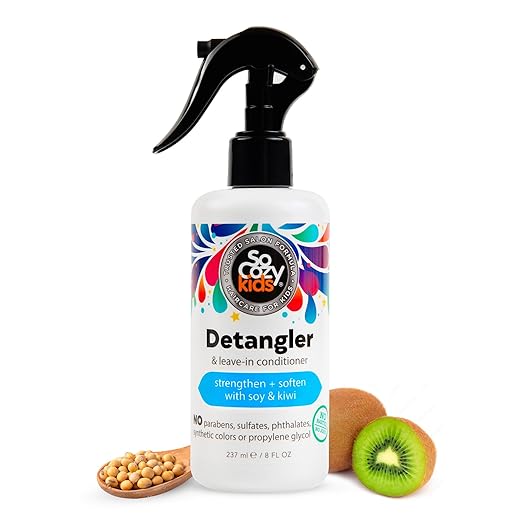
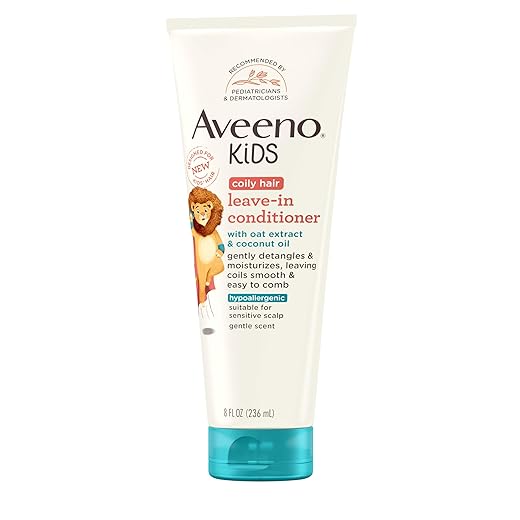
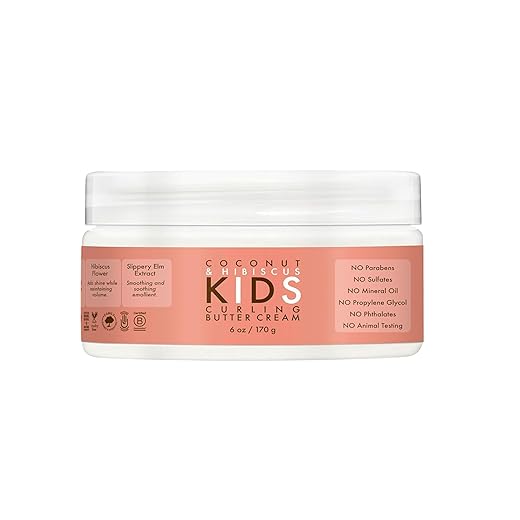

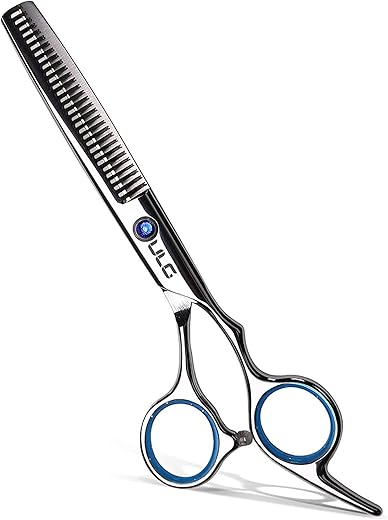
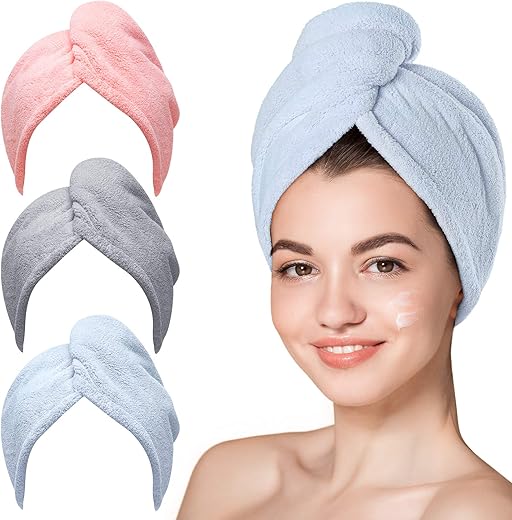
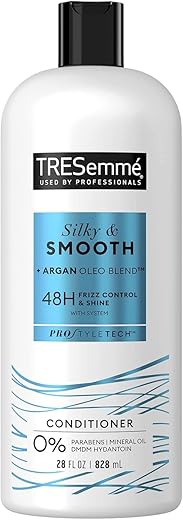
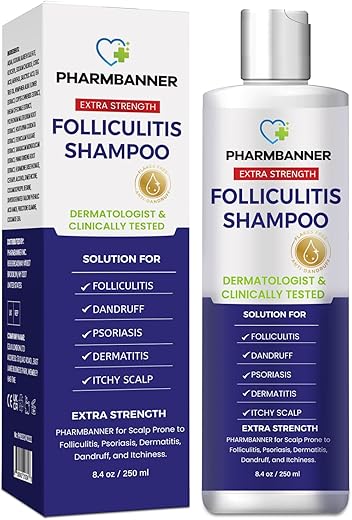

One more voice for the SheaMoisture Curling Styling Cream — my cousin’s kid had the best hold with it without crunch. But beware: if hair is low porosity, that cream can sit on top and look oily.
Would love to see a short flowchart in the article for picking products by porosity and curl tightness.
Appreciate the offer — we might reach out for input.
Thanks — happy to help if you need a user-perspective draft of that flowchart.
Great feedback, Michael. A flowchart for porosity+curl type is a brilliant idea — we’ll work on that. For low porosity hair, lighter formulations or diluted creams often work better.
Agree on the flowchart — I always get lost between ‘coily’ and ‘curly’ product recs.
Funny how this article made product shopping less overwhelming. I tried SoCozy Kids Detangler & Leave-In Spray 8oz at my sister’s house — instant detangle. Two questions:
1) Is it okay to use that daily? My kid’s hair gets tangly fast.
2) Any concerns mixing that with SheaMoisture styling cream later in the day?
1) Daily use of a lightweight detangler like SoCozy spray is usually fine; watch for buildup and clarify occasionally.
2) Mixing a spray with a cream is fine — apply spray first to detangle, then a small amount of cream for definition. Use sparingly to avoid heaviness.
I’ve used SoCozy daily for months, no issues, but I do a clarifying wash every 2 weeks.
If you see limp curls, cut back on the cream amount. Less is more with combo routines.
Thanks everyone! Will start with light amounts.
Also consider a once-a-week co-wash to refresh without stripping.
Love the gentle application tips — they’ve reshaped our bedtime routine. 🙂
Also: the article’s troubleshooting helped me figure out why curls were limp (used too much product). I switched to Aveeno Kids Hydrating Curly Hair Conditioner 12oz on wash days and a little Honest spray for daily refresh. Big improvement.
So glad that worked, Ava! The combo you mentioned is a common winning routine — hydrating wash-day treatment plus lightweight daily spray.
Yay for simple combos. Also, little tip: use a microfiber towel to blot instead of rubbing.
I liked the ingredient section, but felt it skimmed over how to test for sensitivity. My toddler had a mild rash from a sample once — would like a simple patch-test routine spelled out. Zero replies please, I’m just venting 🙈
Helpful article, especially the ‘ingredients to welcome’ bit. I’m trying to avoid glycerin-heavy formulas in winter because it dries my daughter’s hair in cold weather — the article mentioning that was legit.
I did want more on how often to deep condition for toddlers — the troubleshooting touched on it but not much detail.
Thanks — I’ll try every 10 days then monitor.
Good point, Grace. In winter, glycerin can be problematic depending on humidity. For deep conditioning toddlers: once every 1–2 weeks is a good starting point; adjust based on how dry the hair/scalp looks.
I do a gentle deep conditioning every 10 days and it helped reduce tangles a lot. Also do a light protein treatment once a month.
Quick question: anyone tried SoCozy Leave-In Detangler Spray for really fine, curly toddler hair? The article recommends picking the right formula but I’m worried about residue making hair greasy faster.
For fine curly hair, look for lightweight sprays (like the SoCozy sprays listed) and use very small amounts on damp hair. Focus on ends and mid-lengths; avoid the scalp. A quick refresh with a teeny spritz diluted in water can help between washes.
Appreciated the DIY ideas — made a tiny batch with aloe & a drop of jojoba and it smoothed my daughter’s frizz for nap time. Kept it in the fridge and used within 4 days.
Minor nit: the article could include clearer ratios for DIY recipes (I guessed). Otherwise, solid tips!
Yesss ratios please! I always end up making something too watery.
Thanks, Hannah — good to hear the DIY worked. For a basic ratio people often use 1 cup distilled water, 2 tbsp aloe vera gel, 1 tsp glycerin, 1 tsp light oil, plus preservative if needed. Adjust thickness with a small amount of cream.
I appreciate the safety-first tone in the ‘Safe DIY’ section. I’m not comfortable experimenting with preservatives at home, so the product list was useful — went with Honest Company Conditioning Leave-In for its simple ingredient profile.
Tiny gripe: would be nice to see a short allergen callout (like nut oils) on top of the product list for quick scanning.
Good suggestion, Ryan — an allergen quick-glance table would help. We’ll consider that for updates. In the meantime, always check product labels for nut-derived oils if allergies are a concern.
Tried the SheaMoisture Kids Extra Moisturizing Coconut Detangler on my niece and honestly — game changer. Her coils looked softer without weighing them down. The article’s step-by-step was super helpful for avoiding over-application.
I did a quick test vs Aveeno Kids Hydrating Curly Hair Conditioner and liked SheaMoisture better for day-after definition.
Good to know! I always worry about coconut products weighing hair down, so glad you had a light result.
Thanks for sharing, Daniel — great to hear the SheaMoisture worked well for your niece. For day-after curls a little lightweight leave-in at night can help revive without buildup.
I mixed a pea-size of SheaMoisture with a tiny spritz of water on damp hair and it lasted two days on my kiddo — no crunchy bits.
Long post but TL;DR: honest products can still be finicky.
I tried the Honest Company Conditioning Leave-In Detangler Spray because it seemed gentle. Results: decent detangling, not great for curl definition. Tried a DIY creamy leave-in (aloe, glycerin, tiny curl cream) and it helped retain bounce.
Step-by-step I used:
1) gentle co-wash
2) apply small amount of creamy leave-in to sections
3) finger detangle
4) air dry or diffuse on low
Would love tips on storing DIY blends longer than a week — article touched that briefly but any specifics?
Great detail, Liam. For DIY blends: keep them in sterile, airtight containers, refrigerate, and use natural preservatives like a small amount of optiphen if you want longer shelf life. Otherwise 5–7 days refrigerated is safest.
Also second the pump bottle idea — reduces contamination from fingers.
Thanks all — will try pump bottles and date-labeling. Appreciate the preservation tips!
You can also add a teeny bit of grapefruit seed extract as a preservative — not perfect but helps. Be careful with concentrations.
I store tiny batches in a recycled pump bottle and label the date. Refrigeration helps but I toss after a week like the admin said.
This piece was a cozy read. I bought the SheaMoisture Kids Curling Styling Cream 6oz after reading and used it on my niece. The curls looked defined and not crunchy.
Longer thoughts:
– Loved the ‘ingredients to skip’ section — sulfates and heavy silicones are no-go’s for my family.
– The step-by-step made bath-time less chaotic.
– Would love a quick morning refresh routine for second-day curls in the article.
Also, lol at the ‘zero fuss’ claim — it’s a goal, not a promise 😂
Totally — second-day refresh tips: light spritz of water mixed with a bit of leave-in, gentle scrunch, and finger-twist problem areas. Avoid heavy products that can build up.
For quick mornings I use a mix of 70% water, 30% conditioner in a spray bottle. Works wonders!
Agree on avoiding heavy silicones — they gave my kid greasy roots fast.
Thanks all — will try Aisha’s spray next time.